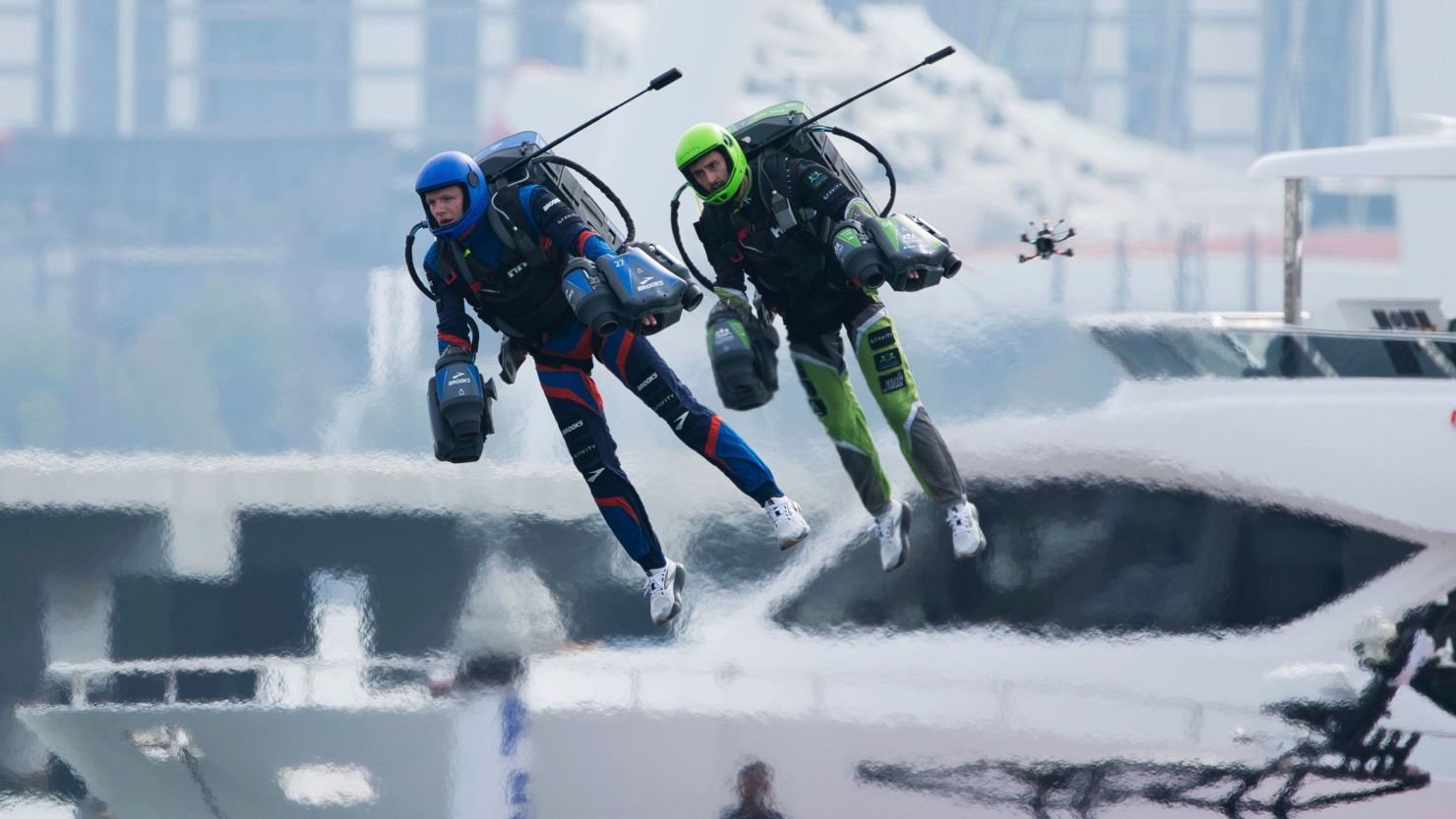
‘Superheroes’ from real life compete in the first jet suit race ever.
Photo Credit ( Pexels )
The Dubai Sports Council and Gravity Industries, the creators of the jet suit, arranged the first Jet Suit Race Series, where airborne sportsmen participated against a backdrop of skyscrapers and super yachts.
Dubai is accustomed to bizarre, amazing, and downright ridiculous innovation, from futuristic buildings to trailblazing infrastructure. But when eight pilots, dressed and booted like Marvel’s “Iron Man,” took to the skies on Wednesday, the “City of Superlatives” became full sci-fi.
But they were not up against alien warlords or supervillains. The Dubai Sports Council and the jet suit’s maker, Gravity Industries, hosted the first Jet Suit Race Series, where the airborne sportsmen battled against a backdrop of skyscrapers and super yachts.
Richard Browning, the chief test pilot at Gravity Industries, a UK-based company he founded in 2017, states that “you’re racing in three dimensions, unlike most racing.” It’s a truly fascinating experience since there are pilots everywhere, both above and below.
The eight pilots navigated between twelve enormous inflatable obstacles positioned in the sea as they raced around a one-kilometer (0.6-mile) track. With each race lasting just about 90 seconds, four heats produced a scoreboard that led to a final round.
“We had complete chaos, in a wonderful way,” Browning adds. “We witnessed individuals losing their composure, individuals receiving disqualifications, and one individual falling into the water.”
He hopes the occasion will encourage the upcoming generation of engineers and scientists to have ambitious dreams: “Until it isn’t, most technology is absurd and unfeasible.”
Gravity’s technology combines five engines—two “micro jet engines” on each arm and a massive one on the back—in a 3D-printed titanium, aluminum, and polymer suit to lift a person into the air. In a 30-kilogram (66-pound) backpack, Browning likens the 1,700-horsepower jet suit to “the power of a Bugatti Veyron” sports car.
By changing the direction of their arms, pilots may control their flight route. For instance, they can lift their arms to the side to go down or point them down to go up. The jet suit can reach Browning’s personal record of 136 kilometers per hour (85 miles per hour) while using aviation fuel or diesel.
There is always a risk, just like in any high-adrenaline sport. Gravity flies low to the ground over grass or water to reduce danger, comparing jet suit collisions to “falling off a motorcycle.”
It’s dramatic because if you fail, you fall in the water. That’s what we do over the water. Repairing it is a little pricey, but everyone is okay,” Browning says.
At the showcase, Issa Kalfon, a former professional gymnast and Gravity’s deputy head of flight training, won first place. Paul Jones and Freddie Hay, both British pilots, came in second and third.
Not all of the pilots were as experienced, even though Kaflon has flown in more than 30 gravity contests and demos.
Although no aviation category currently recognizes jet suits, Browning notes that they closely collaborate with aviation regulatory agencies like the US FAA and UK CAA to ensure compliance with current regulations and safety protocols. Although it wasn’t a gravity suit, a fatal jetpack accident occurred in Dubai in 2020.
The sole contestant who wasn’t a Gravity Team pilot was Ahmed Al Shehhi, a thrill-seeker and frequent skydiver who competed on behalf of the United Arab Emirates. Three weeks prior to the race, Al Shehhi made his maiden flight in the jet suit after completing a rigorous 12-day training program in the UK that involves practicing on a safety tether system before advancing to free descent.
“It’s probably twenty-five minutes if you add up all the time he’s had the engines running,” Browning says. “The speed at which you can get people to adjust to this is astounding.”
Beyond amusement
We created the display to showcase the capabilities of the jet suit, not just for entertainment purposes. Browning, a former reservist in the Royal Marines, is already integrating the jetpack into operations for the medical, military defense, and search and rescue sectors.
In 2020, the Great North Air Ambulance Service (GNAAS) tested Gravity Industries’ jet suits in the rugged Lake District of the UK, reducing a 25-minute hike to a 90-second flight. The company made headlines once again when the British Royal Navy and Royal Marines tested the jet suits with Commando Royal Marines off the southern coast of the United Kingdom for three days in 2021. The jet suits are designed to allow soldiers to board ships at sea more rapidly, which is usually accomplished by helicopter.
According to Browning, “we train medical responders and special forces to move over any terrain, night or day, over wire, mud, mines, water, in weather that grounds most helicopters, to get to any square foot of the planet, do a job, and, importantly, to self-extract.”
Other businesses are also redesigning human mobility. While the Indian firm Absolute Composites is investigating military applications alongside the country’s army, California-based JetPack Aviation claims to have constructed the first jetpack in history, which has featured in movies and television.
According to Browning, the showcase is only the start of the sport. With at least 12 contestants, Gravity intends to host a tournament in Dubai the following year. Browning thinks that this event would “spark the imagination” of individuals and cities worldwide about the potential of this technology.
“This is science fiction coming to life for a lot of our audience,” Browning says. “It’s pretty cool when people approach us and say, ‘I was waiting through my childhood for this, and you finally delivered on what that vision was, what that ambition was,’ whether it’s ‘The Rocketeer,’ ‘Ironman,’ or the Jetsons.”


